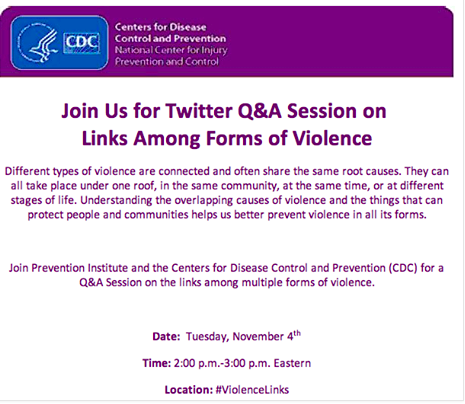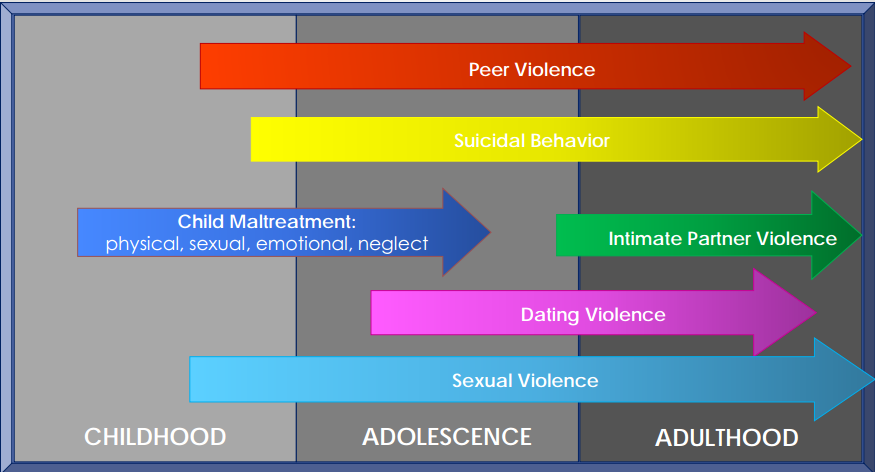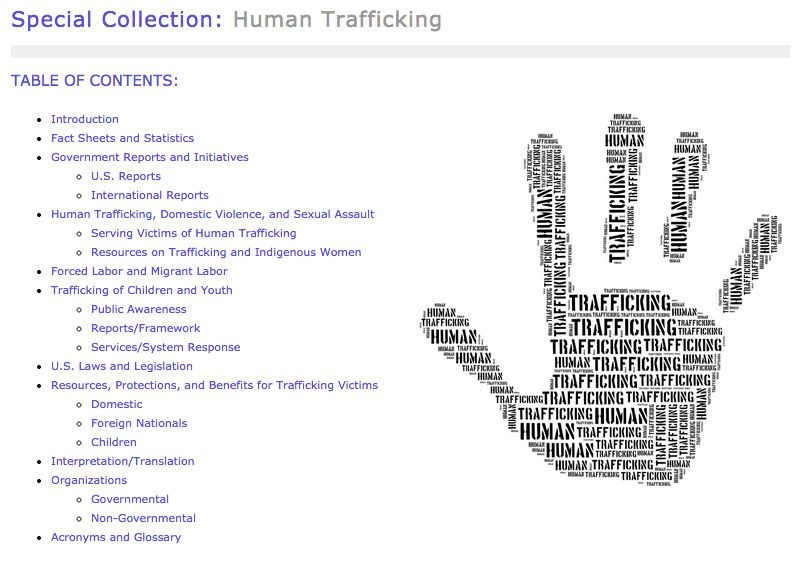Yesterday in class one of our participants mentioned this video, produced by the California Attorney General’s Office, as we were discussing the impact of domestic violence on children. I hadn’t seen it, but obviously I went right out and found it as soon as we were done. A good resource to bookmark for future education sessions, staff meetings, etc.
Tag: pediatrics
The Coalition for Juvenile Justice is hosting a webinar November 19th at 3pm ET: Child Trafficking and Juvenile Justice. Click through for details about the session:
Time once again for Articles of Note, our monthly(ish) overview of what’s new and noteworthy in the peer reviewed literature. There’s a lot to slog through this month (the Journal of Interpersonal Violence is responsible for half the content alone), but definitely some fascinating subject matter (like the relationship between economic status and sexual violence), so I hope you’ll take some time to work your way through the list. Word doc and PDF after the jump:

 A couple weeks ago I posted about the recently released report, Connecting the Dots. It looks like the CDC and Prevention Institute will be hosting a related Twitter Q&A, Links Among Forms of Violence. The chat will take place November 4th from 2-3pm ET, using #ViolenceLinks. Looking forward to the conversation.
A couple weeks ago I posted about the recently released report, Connecting the Dots. It looks like the CDC and Prevention Institute will be hosting a related Twitter Q&A, Links Among Forms of Violence. The chat will take place November 4th from 2-3pm ET, using #ViolenceLinks. Looking forward to the conversation.
(h/t VAWnet)
OJJDP and the National District Attorneys Association are hosting a webinar on male sexual violence survivors, Giving Voice to the Last Silent Victims. The session is being held 16 October from 2-3pm ET. Roger Canaff is the featured speaker. Click through for details.
Good weekend, yes? Aside from some minor tech failure (hello, brand new router), it was pretty lovely on this end. So I’m slogging away this week, trying to just remember, bird by bird. Occasionally procrastinating with the interwebs, but working my way through the long to-do list. Want to see what I’ve been reading since last we spoke?

 The CDC and the Prevention Institute published Connecting the Dots: An Overview of the Links Among Multiple Forms of Violence recently, but it didn’t seem to get much in the way of fanfare when it was released. That being said, I think it’s an important read. Our patients frequently experience multiple forms of violence in their lives, and understanding the overlap allows for more trauma-informed care and more targeted assistance. What’s nice about this report is that it also comes with its own slide deck for teaching purposes, so this is a great resource to bookmark for future use.
The CDC and the Prevention Institute published Connecting the Dots: An Overview of the Links Among Multiple Forms of Violence recently, but it didn’t seem to get much in the way of fanfare when it was released. That being said, I think it’s an important read. Our patients frequently experience multiple forms of violence in their lives, and understanding the overlap allows for more trauma-informed care and more targeted assistance. What’s nice about this report is that it also comes with its own slide deck for teaching purposes, so this is a great resource to bookmark for future use.
(Image via)
Time once again for Articles of Note, our monthly look at what’s new in the peer reviewed literature. What is it about some months that make them so much better than others? I don’t know, but I have to tell you, this is one of those. First off, there’s a lot to wade through. And second, there’s a lot of breadth to the research, meaning that this month’s list should be relevant to a wide variety of practices. As always, the review isn’t exhaustive, just what’s caught my eye in the September/October/November journals (and the online releases). Contact me for the word doc; click through for a printable PDF and the hyperlinks, all of which go to PubMed unless otherwise indicated.

 VAWnet has a new special collection available on Human Trafficking. Do I even need to say anymore that you should go check it out? I didn’t think so.
VAWnet has a new special collection available on Human Trafficking. Do I even need to say anymore that you should go check it out? I didn’t think so.
Greetings from Montgomery, AL, from where I am currently trying to escape after a brief lecture at Maxwell AFB. If you’ve been playing along at home, you know that I have managed to hit all 4 time zones in the continental US over the past week, and I’m on day 8 of travel, which is making me cranky. Assuming the weather holds I’ll be home tonight and for the next couple weeks. Let’s not talk about October right now; I’m going to pretend it’s simply not happening. My failed attempt to get an earlier flight home means I am sitting at the airport with all kinds of time to catch up on the interwebs; here’s what’s caught my eye since last we spoke:
Since Last We Spoke 9-8-14
I woke up this morning at Joint Base Lewis-McChord in Washington, very far from home and decidedly still on east coast time. I’ll be here for a hot minute before I move on to Billings, MT where we are rolling out a brand new IPV curriculum (super excited about that), so this week is a long one. I will attempt regular posts, but forgive me if they’re a bit light this week. You just never know how a new course will go. This weekend consisted of a lot of prep, but there was still plenty of distraction–here’s what caught my eye since last we spoke:
Futures Without Violence and the American Academy of Pediatrics have a free, online learning module, Addressing the Bigger Picture in Pediatric Settings: Adverse Childhood Experiences. The session is available for CEU/CME credit. Click through for details:
I’m always harping on the importance of social media as a tool for the work we do, so I’m thrilled that Safe States and the CDC are collaborating on an upcoming webinar series that addresses just that. Why Social Media for Injury and Violence Prevention (IVP) kicks off the series September 17th from 1-2pm ET. Click through for details about the session and information about the entire series:
From an email announcement I received today:
The National Center for Child Traumatic Stress (NCCTS) in collaboration with the NCTSN Culture Consortium, Terrorism and Disaster Program and Policy Taskforce, is sponsoring a Virtual Town Hall meeting to address the recent surge in unaccompanied immigrant minors from a trauma-informed perspective. Unaccompanied immigrant minors are youth who come to the United States without a legal guardian and without legal immigration documents. There has also been a surge of young children who come with their caregiver across the border of the United States without immigration documentation. The 90-minute Town Hall is scheduled for Tuesday, September 16th at 9 Pacific / 11 Central / 12 Eastern (see attached flyer). All are welcome!
Time once again for Articles of Note, my list of the things that have caught my attention in the latest round of peer-reviewed journals. This month has quite a lot to explore, but as always, this list isn’t comprehensive (and it’s subject to my specific interests). The majority of links take you to the PubMed abstract, except where indicated. Click through for the PDF and active links; contact me for the list as a Word doc.
Hey, Toronto readers: I’m coming to your fair city for a wee bit of relaxation this weekend. You all know how much I love a good meal, so feel free to send your food suggestions my way. We’ll be there for the (US) holiday weekend, so I’ve basically got 3 days on the ground. I’m fortunate enough to get to eat a lot of terrific meals all over the world; the goal for this weekend is less emphasis on fancy, more emphasis on seriously authentic ethnic foods of all stripes. Toronto is such a cool, diverse city, we’re hoping to basically just graze our way through the weekend.
Now that we’ve taken care of the important stuff I can tell you that this past weekend was a bust. Really the best thing I can say about it was that I now no longer have staples in my head, so there’s the silver lining. I had plenty of time to read, though; here’s what caught my eye since last we spoke:
I was just having a discussion this week about the issue of consent with teens, so the timing of this is perfect: one of the Tribal Forensic Healthcare project’s September webinars is Adolescent Consent and Privacy Issues. The session will be held September 16th from 3-4:30pm ET. As with all of their webinars, CEs are available and free. Click through for all of the details.
I’m on my way to the NAC (for the 2nd of 3 trips down there in a month)–we’re kicking off the inaugural run of a fantastic (I hope) interactive testimony course for SANEs and prosecutors. Considering we started working on this about 18 months ago, it’s exciting to finally see it come to fruition. And a bit nerve-wracking, as all 1st time courses can be. I was pretty focused on prep this weekend and didn’t spend a lot of time surfing the interwebs, but there were still a few things that caught my eye since last we spoke:
OJJDP just released a new resource: Recognizing When a Child’s Injury or Illness Is Caused by Abuse (PDF). It’s written for law enforcement, so this is really more of a SART or MDT resource, than a clinical text. I was happy to see it addresses issues like aging bruises based on color (you can’t), and provides some good overview information about a variety of injuries and other findings. I haven’t gone through the whole thing, but it looks promising. Peds folks weigh in…
After yesterday’s post I received a request from an FHO reader for more resources on caring for patients who have experienced female genital mutilation/cutting (literature seems to be divided on the proper terminology so I am using both here). Not surprisingly, there isn’t a huge amount of clinically-focused information out there, and much of it is specific to obstetrics. I rounded up what appeared to be the best and most current articles and clinical guidelines (mostly free full-text) and included links to previous FHO posts addressing the same topic. As always, it’s not exhaustive (I opted to leave most of the obstetric-specific information out), but hopefully it’s useful.
